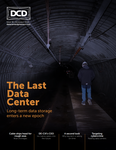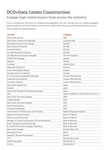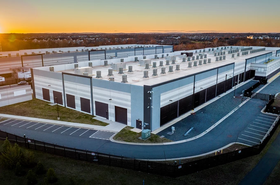Looking for more space for data centers, and shocked at the price of land? There's a Swiss startup with a radical suggestion for you. Build underground.
There are plenty of data centers in underground caverns, from Lefdal Mine in Norway, to Bluebird in Springfield Missouri, Bahnhof's Pionen, or even the Arctic World Archive in Svalbard, profiled in our latest magazine. But underground data centers have not previously been seen as a solution to land shortages, because they have been built in pre-existing caverns, that tend to be (like the Arctic World Archive) in inaccessible locations.
Swiss firm Eccus wants to change that. It's offering caverns built to order, under cities or in any other location you want, subject to geological conditions.
Into the Eco Caverne
The company is the brainchild of tunneling engineer Andrew Bourget, who has spent a lifetime building tunnels for metro stations and other urban facilities. He lives in Switzerland, where he saw a data center project near Zurich, which was consuming a large amount of land to provide very few jobs.
One of the most criticized aspects of data center sprawl is the fact that as a tech hub develops, competition for land for data centers can put up prices, forcing out other parts of society. Cities like Amsterdam and Frankfurt have imposed limitations on data center building. Even in Loudoun County in Northern Virginia, which originally attracted data centers because of large tracts of land close to communications lines, local authorities are having to rein in data center developers.
Bourget came up with the idea of creating an underground space, and fitting it up for a number of uses. Data centers are ideal, he says, because they don't need much human intervention. They are actually better off underground, safe from weather extremes and protected from fire in a low-oxygen atmosphere, with a steady underground temperature of 13C and controlled humidity.
Eccus has a standard design for an underground cavern, which is essentially a tube 13m in diameter, It has a goods lift at one end, and a smaller entrance at the other end, providing a fire exit. It is up to 150m long. Why that length limit? Because under Swiss law, you should never be more than 75m from a fire exit.
The cavern works out at €500 ($526) per cubic meter, and the cost includes power and fire prevention systems. The size is about right for a 2MW data center, Bourget says - which sounds a good fit for an urban Edge facility needing to find space close to a concentration of local businesses.
Cooling is easy to add, given the surrounding soil's heat capacity - and if the cavern is built under a city, there could be plenty of customers for the waste heat from the data center.
Have you got the right geology?
To build one of these facilities, all Bourget needs is local geology consisting of 30m of impermeable medium, above bedrock. It turns out that Switzerland and large parts of urban France have these properties. Eccus' first data center partner, APL, is planning to offer facilities in those two countries.
But beyond that, London clay could be perfect for installing one of his underground concrete cylinders - and Bourget has his eye on wider expansion.
The pitch is fundamentally about the price of land. Data centers can rent underground space from existing owners, at a much cheaper rate than buying new land. If a data center operator already owns valuable land in Paris or London, they can build a new facility underground, move the data center down there, and then sell or rent the existing building or space above ground, to get a solid income that could more than cover the underground building costs.
To me, this has some of the same elements as the underwater data center proposals of Microsoft and China's Highlander, which put a small module of data center capacity in a pressure vessel on the seabed, where it will operate unattended. Eccus is offering a bigger cylinder, and much more straightforward access to its sites, but fundamentally, it's another place to put a lights-out facility, which will operate with only occasional visits.
Underwater data center proponents are basing their model on the fact that most of us live within a few miles of an ocean or large river, so a data center under coastal water can be an Edge facility, close to customers.
Underground data centers could trump that because, without exception, we all live on the ground. These caverns could potentially be placed discreetly and out of the way, but as close to people and applications as you can imagine.





